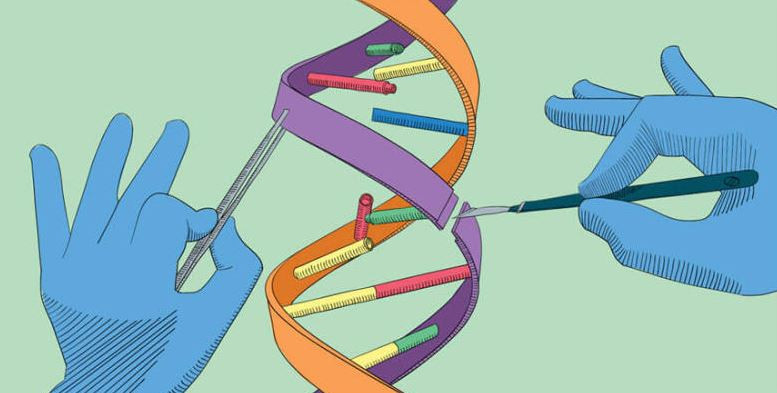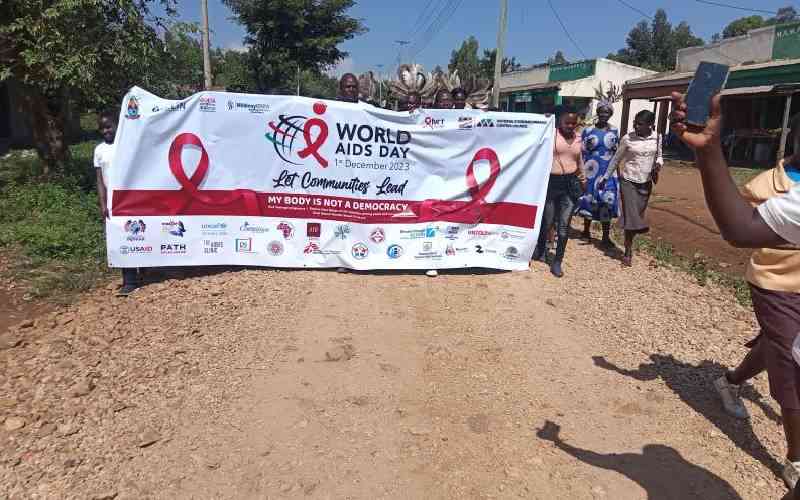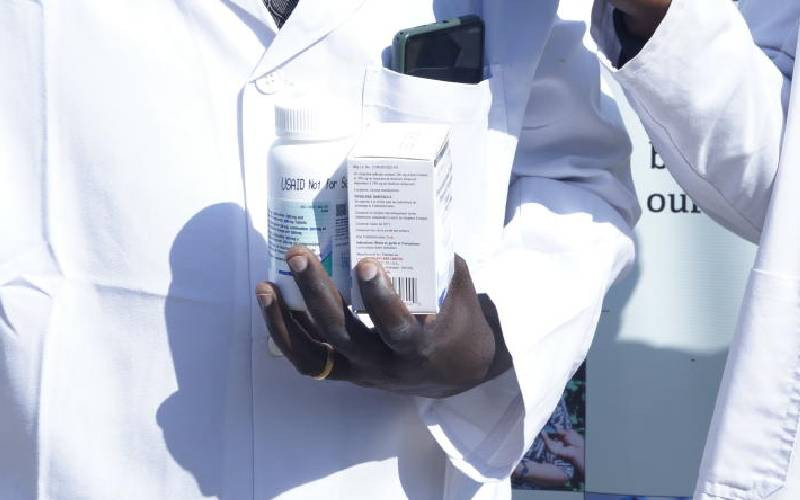
The Ministry of Health is observing high demand for HIV self-testing services (HIVST) among men in the country.
The latest data from National AIDS and STI Control Programme (NASCOP) shows that since 2018 when Kenya adopted the service, there has been an increase in the number of men linked to self-testing services.
In 2018, out of 30,384 2018 participants aged 15-64 years Kenya Population-based HIV Impact Assessment (KENPHIA), 96 per cent had never self-tested for HIV.
According to the 2023 HIV estimates, 89.5 per cent of the male population now know their HIV status, compared to only 73 per cent reported in 2018.
Keep Reading
HIV Prevention Manager at NASCOP Dr Jonah Onentiah said the majority of men identified with the HIVST kits are those aged between 15 and 64 years, a demography with poor health-seeking behaviour.
"HIV self-testing kits have enhanced identification of men, youth and key population, who sometimes by nature of their work they have no time to visit facilities," said Onentiah.
"We therefore had to get a way of reaching out to them, through the self-testing kits," said Onentiah.
HIV self-testing is a process whereby an individual collects his or her specimen, performs a test and interprets the results, often in a private setting either alone or while with a trusted person.
The testing kits can be collected at a hospital or in private chemists across the country.
Under the ministry's policy guidelines, the kits are given to pregnant women during Antenatal Clinics (ANC) which they take to their spouses for HIV screening.
"Most men do not accompany women to facilities, this is why the self-testing kits are offered to women to take with them, for testing at home," added Onentiah.
After testing, all reactive (positive) self-test results are taken back to the ,facility for diagnostic confirmation by a trained health provider using the national three test HIV testing algorithm (method).
With diagnostic testing, individuals who test HIV positive are put on Antiretroviral Therapy (ART) programme, whereas those found negative are advised to adhere to preventive measures.
"The self-testing kit is a screening tool, and not a diagnostic tool. This means the status found is not the final result. It is a screening tool to know your HIV status, so that the client visits the facility for confirmatory testing," said the official.
Dr Onentiah added that self-testing is a complementary approach to existing HIV testing services.
On her part, Kisumu County HIV Coordinator Eunice Kinywa said self-testing has increased enrolment of people on HIV treatment.
"HIV testing through a network like pregnant women home-based testing has increased, therefore enhancing the prevention and treatment of the virus," said Kinywa.
The Ministry's data reveals that of at least 1,377,784 people who are living with HIV in the country, 1.2 million are on ART.
Kajiado County AIDS and Sexual Transmitted Infections (STI) Coordinator Alice Njoroge said though high consumers of the HIV self testing kits being spouses, usage is also higher among young people, especially campus students, and uniformed police officers.
However, according to the official, the main challenge facing the Ministry is failure by men to present back the tests to hospital for diagnostic tests.
"Not all results are brought to hospital for further testing," said Njoroge.
At times, we make phone calls to those we supplied the kits to, but not all respond. Some men give incorrect mobile phone numbers," said Njoroge.
Njoroge said the majority of men who fail to take their results to hospital for diagnostics are those who test without any help.
The official explained that there are two models used in HIV self-testing, namely assisted and non-assisted.
With non-assisted, a client picks the kits and have them test at their own convenient private spaces, while assisted allows them to test with the help of a healthcare provider in a facility.
NASCOP laboratory officer, Christabel Awuor told The Standard in an interview that in order to ensure accurate results when using HIV self-test kits, it is important to follow testing procedures and instructions.
The kits, she said, should also be sourced from registered pharmacies and health facilities.
"Testing kits should be used in a proper manner. For example, we could have faulty results due to failure to follow instructions," said Awour.
The laboratory expert emphasised that the HIV self-testing is a screening test, and that it does not provide sufficient to make HIV-positive diagnosis.
With the tool, a positive self-test result is confirmed using the national testing algorithm, whereas a person testing negative is advised to re-test after three months.
Awour added that HIV self testing has the potential to act as a catalyst towards increasing access to and coverage of HIV testing.
The tool also offers individuals with an opportunity to test in privacy, therefore avoiding stigma or discrimination associated with visiting a health facility for an HIV test.
"Self testing encourages testing among key populations like men who have sex with men, sex workers, and intravenous drug users, as well as vulnerable populations who may be facing barriers in accessing conventional testing services at health facilities," said Awuor.
Kenya rolled out self-testing in 2018 with the aim of testing for populations with poor health seeking behaviour, more so men, adolescents and young people.
The policy was in line with World Health Organisation (WHO) guidelines.
The guidelines positioned the service as a strategy to achieve the UNAIDS 95-95-95 goals, aimed at ensuring at least 95 per cent of the population know their HIV status, 95 per cent are put on treatment and 95 have their viral load suppressed.
These guidelines further outline the approaches, procedures, benefits and risks of self-testing.





